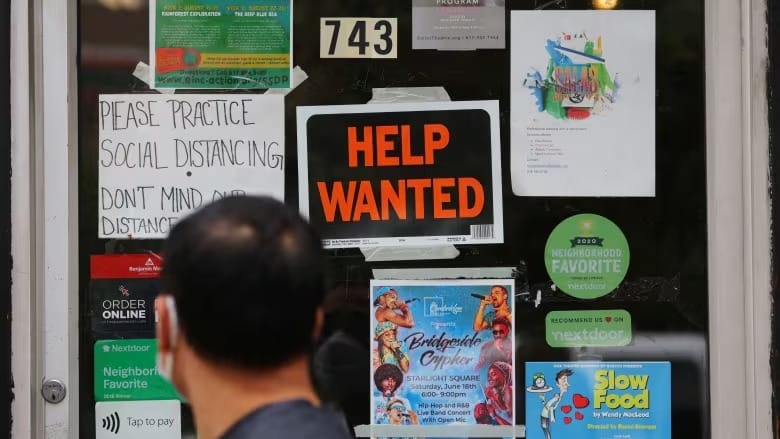Immigration prevented a recession last year, but looming changes could stall growth: economists
Business group says federal move to roll back numbers is 'going to hurt' economy

Reducing the number of new immigrants could negatively impact the economy and create challenges for businesses, according to economists and business leaders.
Canada’s economy, measured through indicators like GDP, has shown positive trends partly due to rising immigration, economists say. Statistics Canada reported in March that the country’s population grew by 1.3 million in 2023, with 97.6% of the increase driven by immigration.
Under the government’s original plan, Canada was set to welcome approximately 500,000 new immigrants in both 2025 and 2026. However, on Thursday, the federal Liberals announced a reduction in those numbers, lowering the target for new permanent residents from 485,000 this year to 395,000 in 2025, 380,000 in 2026, and 365,000 in 2027.
Immigration Minister Marc Miller said the new limits are intended to ease pressure on the housing market and stabilize population growth.
Population Growth Helped Sustain the Economy
Some economists caution that cutting immigration could have economic drawbacks.
"If it was not for the population growth we had last year, the Canadian economy would have been in a recession by the end of 2023," said Charles St-Arnaud, chief economist at Alberta Central. He explained that while individuals may be spending less due to economic uncertainty, increased immigration still drives overall spending.
"That kept the economy afloat," St-Arnaud said, though he acknowledged that immigration levels need to be balanced with pressures on the housing market and public services.
Rebekah Young, an economist at Scotiabank, warned that even a slight decrease in GDP from slower population growth or population decline could have significant economic consequences.
"Maybe we're talking about shrinking GDP by half a percent or three-quarters of a percent, but you're still talking about shrinkage instead of growth," she said.
Young compared the government’s new immigration policy to the fairy tale Goldilocks and the Three Bears.
"It was too hot last year... but what they announced today, if they follow through, is going into 'too cold,' essentially flat-lining growth," she said.
Business Groups Sound the Alarm
Business leaders are concerned about the economic fallout from the immigration cuts. The Canadian Federation of Independent Business (CFIB) says many of its members are struggling to fill vacancies.
"You know, people aren’t lining up for night shifts at quick-service restaurants," said CFIB president Dan Kelly, calling both temporary and permanent immigrants "a godsend to the Canadian economy" and essential to businesses nationwide.
"It’s going to hurt," Kelly added, noting that the new immigration targets and recent changes to the temporary foreign worker program mark a "dramatic ramping down" of workforce support.
Kelly explained that many businesses have difficulty hiring from the existing Canadian labor pool and are forced to look abroad for workers. However, increasing wages isn’t always feasible, especially in industries like food service and retail.
"At a certain point, Canadians aren’t willing to pay the prices necessary to justify those wage increases," he said.
In a statement, the Canadian Chamber of Commerce echoed these concerns.
"Immigration is a key driver of economic growth and our only source of workforce growth in the near future," wrote Diana Palmerin-Velasco, senior director of Future of Work at the chamber. "This is especially critical given our aging population, low fertility rates, and ongoing retirements."
A Shift in Public Attitudes Toward Immigration
Some researchers suggest the immigration cut could reduce negative public sentiment toward immigration.
"A weakened economy makes Canadians more nervous about competing for jobs and resources," said Victoria Esses, director of the Network for Economic and Social Trends at Western University.
"Immigration levels and people’s perceptions of those levels are influencing their attitudes," she explained.
Esses argued it is a "myth" that immigration is directly driving unaffordability in Canada.
"Many new permanent residents are already living in the country as temporary residents. They’re already housed somewhere," she said.
However, BMO senior economist Robert Kavcic told CBC News that reducing immigration could bring changes to the housing market.
"The first thing you’ll notice is some relief in the Canadian economy, especially in rental markets, where many non-permanent residents tend to settle," he said.
Potential Impact on Interest Rates
The immigration changes could influence future decisions by the Bank of Canada, said St-Arnaud. He noted that the central bank likely didn’t anticipate such a sharp slowdown in population growth in its recent forecasts.
According to a government press release, the new immigration plan will result in a 0.2% decline in population over the next two years.





